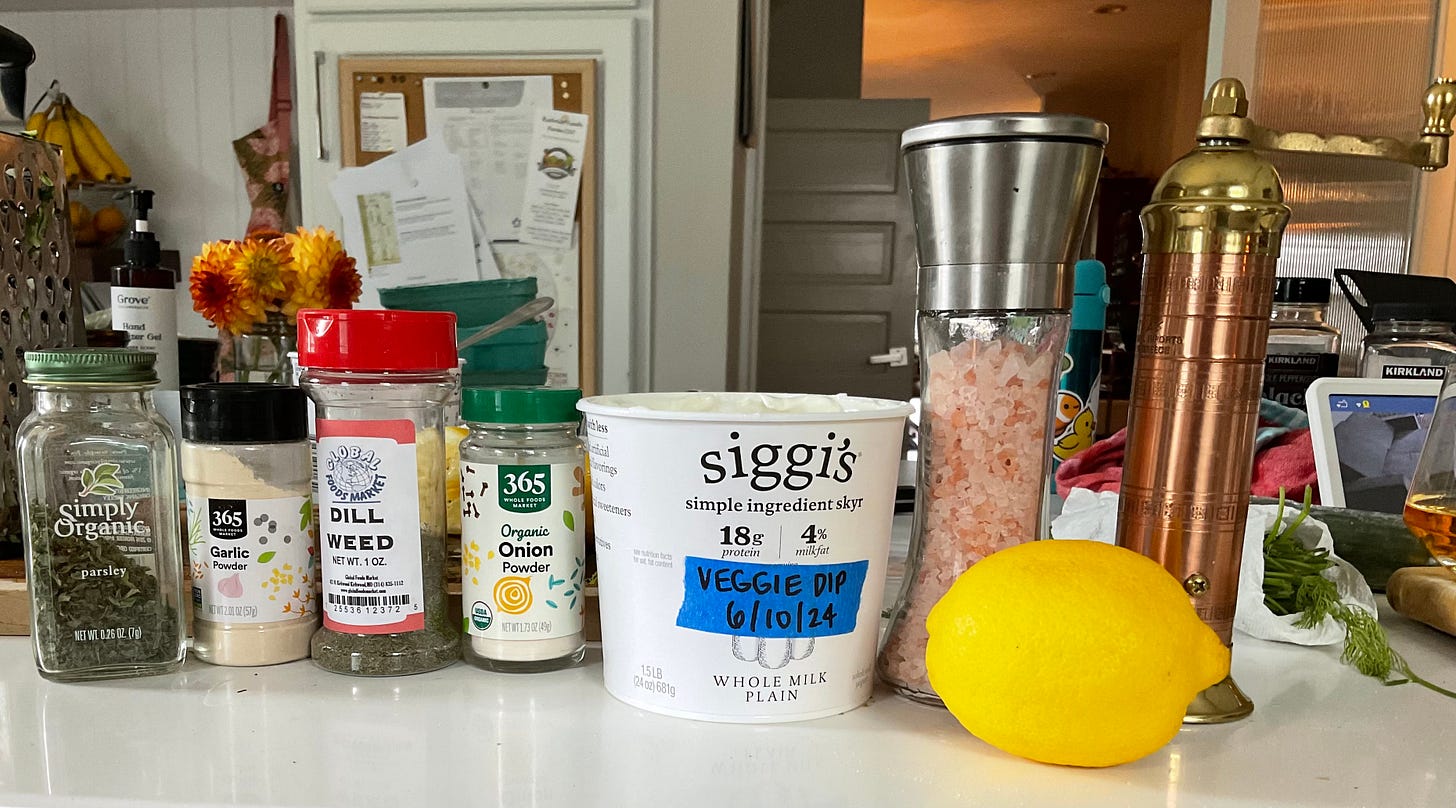TODDLER SNACKS ARE JUST PEOPLE SNACKS
If you are trying to make a concerted effort to clean up your snacking game, take a peep! Simple and clean eating for ages 2-99 😘
Part of the reason I came to Substack was to write about all ages eating the same thing at the table, so I figured it would be logical for one of my first posts to be about that. But make it snacks. Most of this post will focus on toddler eating habits (what eating habits?), but that doesn’t make it any less interesting or valid for our own eating habits as grown-ass adults. And at the end, you get a bomb recipe for a very easy savory yogurt vegetable dip - I dare say it’s better for you than Hidden Valley Ranch…


When it comes to snacking for toddlers, what I see around the internet is so overly complicated. Batch cook this, hide the veggies in that, make it cute! Why? I can appreciate the dedication to creating wonder and delight in your child’s experiences with food, but much like the approach to regular mealtimes, a toddler’s snacks really should be no different than snacks that we would feed to ourselves. And for the love of god, they shouldn’t take up your precious brain space or time to create!! Save yourselves, just a little bit.
And then it makes you wonder: why go through the trouble of making your child’s food so different from yours? These differences are highlighted and noticed, and that information is stored in your child’s mind because that’s all that their little brains are doing all day long. So snack right along with your little snack gremlin and model what you want to see.
*When my son was going through infant feeding therapy and we were starting solids, the most important thing that I learned from our therapist was this: it is psychologically confusing for a baby to see that their food doesn’t look anything like everyone else’s at meal times. If the food that they eat is constantly different from yours, there is a higher likelihood of developing resistance to various aspects of eating (trying new foods, learning how to use utensils, etc), and the discrepancies between your plates and difficulties with eating together starts to become the norm. Or so I hear. Because we have been so consistent with eating the same thing at the same time with our son, he actually gets a little agitated when we do eat different things.
Of course, it is perfectly okay for everyone at the table to be eating different things every once in a while - like a “random leftovers” night or going out to eat at a restaurant. This is a socially acceptable thing. So is having everyone order the same thing at a restaurant (although this personally drives me nuts, it really limits your ability to share and experience a good chunk of the menu!) But with every moment being impactful for your young eater, no one should be stressing to make something separate for each child or person all of the time - ideally.
I understand that there are those who need to feed their children differently due to allergies, developmental delays or disabilities, changing attitudes and tastes, etc. If you are able to create foods that your challenged eater loves to eat, why not try to eat the same thing with them? As long as it’s the same recipe, it won’t be as visually disturbing to your young eater as an entirely different recipe would. By showing your child that you’re eating and enjoying the same food, they are getting the green light from you to go ahead and dig in!
The snacking philosophy in our house leans heavily on whole foods with a little bit of room for careful consumption of the salty, crunchy, sweet treats that are ultra-processed foods (UPFs), or foods that are very far-removed from their original state. Although it can be done, it is so difficult in this world to avoid UPFs, especially with young eaters. You need something fast, you need something easy, you need it to travel well, the list goes on. UPFs fit this bill handily, but so do a lot of other whole foods. Stick to fruits that have a skin to peel later 🍊🍌 or are self-contained in edible skin 🍎🫐 and vegetables that can be cut in advance and stored in your fridge 🥕🫑🥒🫛. Homemade granola bars are a great option to take on the go, but make sure it’s not very hot outside or you’ve packed some ice packs because who wants extra sticky toddler hands touching everything? Not me.
Then you can sprinkle in some UPF snacks here and there, offering them last out of your snack arsenal, knowing that the majority of what you offer are whole foods. Crackers, goldfish, fig bars, and grass-fed beef sticks are our current go-tos. We try to only rely on them when we leave the house - errands, park time, beach time, zoo outings - and call them “Leave The House Snacks” to make them enticing as a *special* treat but avoid overconsuming them at home. This boundary has really helped set the tone for having a balanced mindset when it comes to eating processed foods.
At home, you have your whole food supply to choose from. This is where it’s easiest to avoid the UPFs. Below, you’ll find our son’s snack rotation, which I’m sure will change in the next six months and I’ll have another newsletter to write, but here we are.
An incomplete list of the current faves of a 2 ½ year old:
fruit. all the fruit. 🍉🍎🍊🍓🫐🥝🍌🍒
make sure you know your Dirty Dozen and Clean 15 for a quick organic buying guide - check my previous post for the full lists
hard boiled eggs w/salt + pepper 🥚
dates + peanut butter
remove pits, tear date in half long-ways, cut each date into 4 pieces, spread peanut butter on
helpful for constipation! 💩
fresh vegetables with savory yogurt dip or hummus
snap peas
salad turnips
red bell peppers
cucumber
carrot sticks
char-CUTE-erie
dried apricots
slice diagonally in half, watch carefully for complete chewing
cheese
fresh vegetables (see above)
fruit + whole milk yogurt
fresh (sliced strawberries, raspberries, blackberries, peaches, cherries)
compotes (blueberry, mixed berry, strawberry rhubarb)
optional add-ins (ground flaxseed, cinnamon, **honey - only for over 12 months)
chicken/tuna salad and crackers
when making your chicken/tuna salad, finely chop lots of seasonal vegetables to mix in - variations on this are coming in a future post!
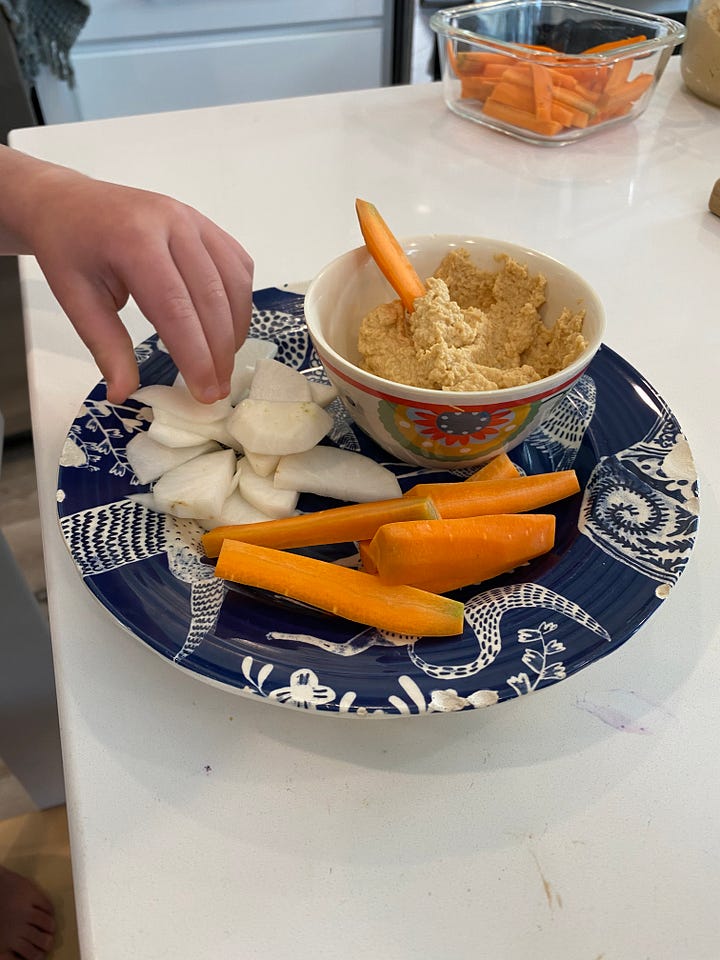
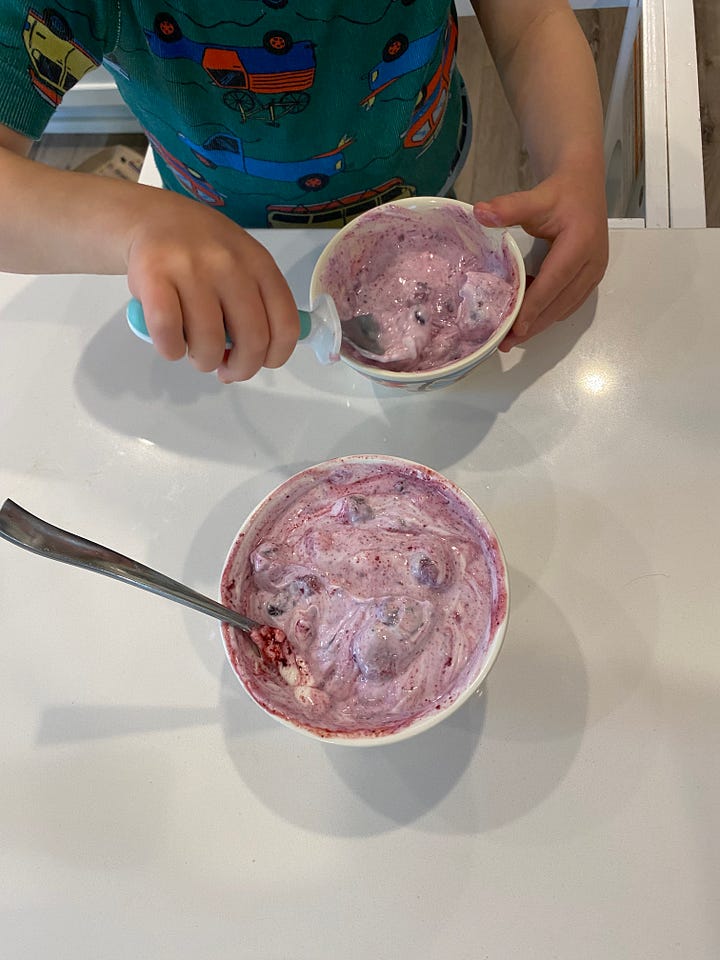
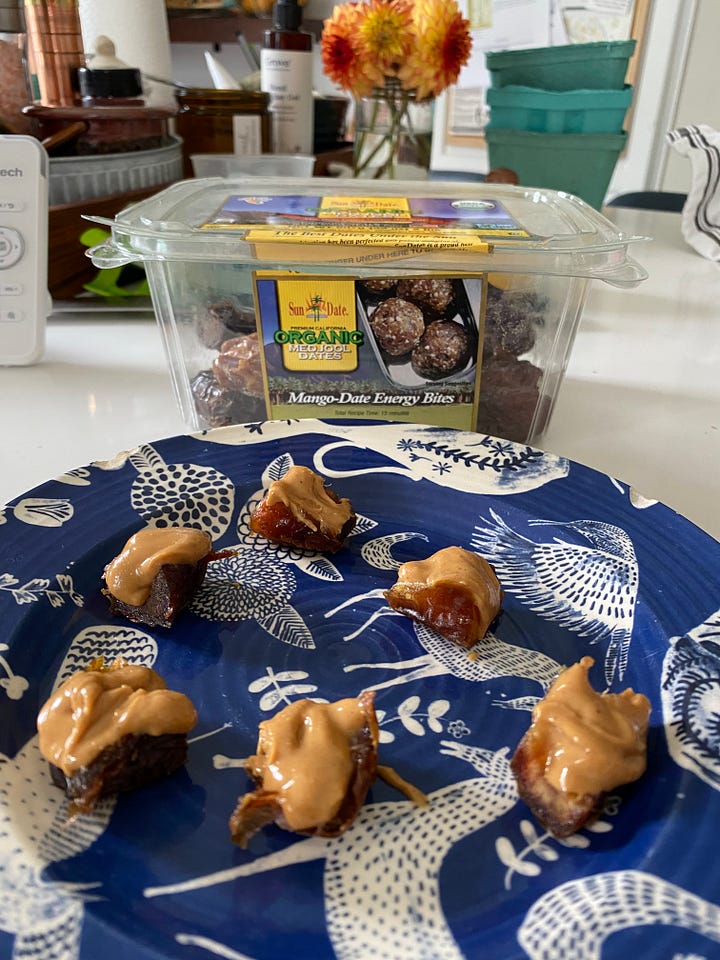
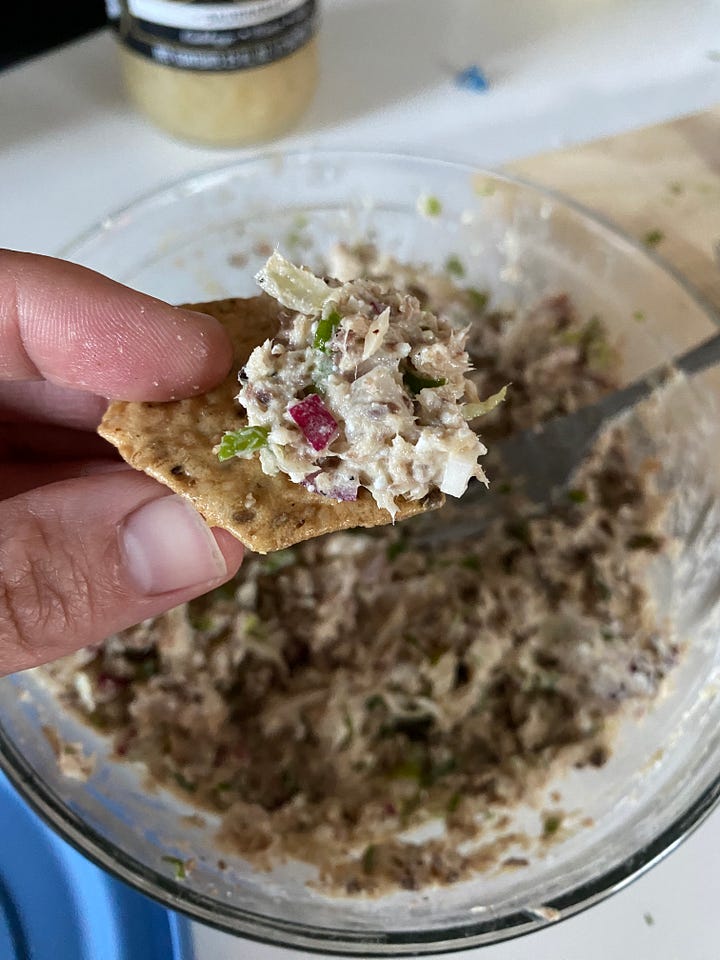
SAVORY YOGURT DIP
makes 1 ½ cups
Ingredients
1 ½ cup whole milk skyr or Greek yogurt
1 tsp dried dill
1 tsp dried parsley
½ tsp onion powder
½ tsp garlic powder
1T lemon juice
salt + pepper, to taste
Directions
in a bowl or tupperware container, mix all ingredients above until combined.
serve with fresh vegetables, cut to appropriate size
Notes:
tsp = teaspoon ; T = tablespoon
I love using skyr over Greek yogurt for the protein content
as seen in the photo below, you can make this dip in the actual yogurt container - we love minimal dish washing!
*Disclaimer: I am not an infant feeding therapist, but my son had one for his first year of life. Marie was one of many incredible medical professionals that helped us navigate our unique entrance to early parenthood. If you have any questions or are needing any professional guidance in this area, you can reach out to her on Instagram or her website. She is the best!
Please enjoy these snack ideas and yogurt dip recipe with your toddler or all by yourself. I hope your day was made a little easier and maybe a little more flavorful.
Leave a comment to let me know what you think! And share with your friends, family, all your circles of influence! At this point, all feedback is good feedback.
From the bottom of my heart, thank you for being here.
❤️ Sarah





